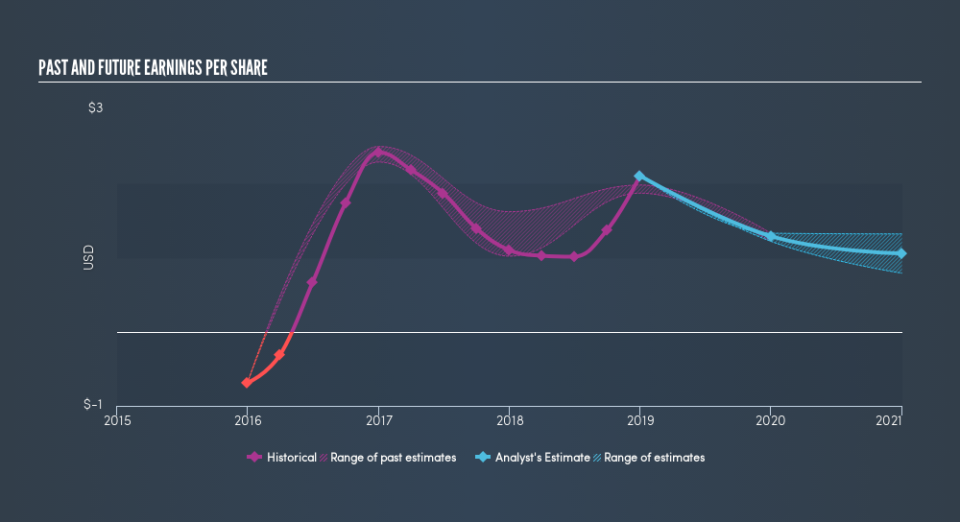Introducing Jernigan Capital, A Stock That Climbed 37% In The Last Three Years

Buying a low-cost index fund will get you the average market return. But in any diversified portfolio of stocks, you’ll see some that fall short of the average. For example, the Jernigan Capital, Inc. (NYSE:JCAP) share price return of 37% over three years lags the market return in the same period. Having said that, the 23% increase over the past year is good to see.
See our latest analysis for Jernigan Capital
There is no denying that markets are sometimes efficient, but prices do not always reflect underlying business performance. One way to examine how market sentiment has changed over time is to look at the interaction between a company’s share price and its earnings per share (EPS).
During three years of share price growth, Jernigan Capital moved from a loss to profitability. That would generally be considered a positive, so we’d expect the share price to be up.
The image below shows how EPS has tracked over time (if you click on the image you can see greater detail).
We like that insiders have been buying shares in the last twelve months. Having said that, most people consider earnings and revenue growth trends to be a more meaningful guide to the business. Before buying or selling a stock, we always recommend a close examination of historic growth trends, available here..
What About Dividends?
When looking at investment returns, it is important to consider the difference between total shareholder return (TSR) and share price return. Whereas the share price return only reflects the change in the share price, the TSR includes the value of dividends (assuming they were reinvested) and the benefit of any discounted capital raising. So for companies that pay a generous dividend, the TSR is often a lot higher than the share price return. In the case of Jernigan Capital, it has a TSR of 72% for the last 3 years. That exceeds its share price return that we previously mentioned. The dividends paid by the company have thusly boosted the total shareholder return.
A Different Perspective
Pleasingly, Jernigan Capital’s total shareholder return last year was 32%. That includes the value of the dividend. So this year’s TSR was actually better than the three-year TSR (annualized) of 20%. Given the track record of solid returns over varying time frames, it might be worth putting Jernigan Capital on your watchlist. It is all well and good that insiders have been buying shares, but we suggest you check here to see what price insiders were buying at.
If you like to buy stocks alongside management, then you might just love this free list of companies. (Hint: insiders have been buying them).
Please note, the market returns quoted in this article reflect the market weighted average returns of stocks that currently trade on US exchanges.
We aim to bring you long-term focused research analysis driven by fundamental data. Note that our analysis may not factor in the latest price-sensitive company announcements or qualitative material.
If you spot an error that warrants correction, please contact the editor at editorial-team@simplywallst.com. This article by Simply Wall St is general in nature. It does not constitute a recommendation to buy or sell any stock, and does not take account of your objectives, or your financial situation. Simply Wall St has no position in the stocks mentioned. Thank you for reading.

